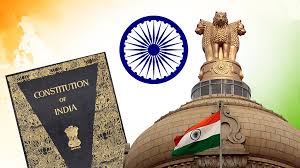WRITS:
The Supreme Court(under Article 32) and the high courts (under Article 226) can issue the writs of habeas corpus, mandamus, prohibition, certiorari and quo-warranto. The Parliament Can Empower any Other Court these Writs.Habeas Corpus:
Literally means ” to have the body of “
It would set the detained person free, if the detention is found to be illegal .Thus, this writ is a bulwark of individual liberty against aribitary detention.
The writ of habeas corpus can be issues against both public authorities as well as private individuals. The writ, on the other hand, is not issued where the
(a) detention is lawful,
(b) the proceeding is for contempt of a legislature or a court,
(c) detention is by a competent court, and
(d) detention is outside the jurisdiction of the court.
Mandamus:
It Literally means “We Command”
Its a command issued by the court to a public official – To Perform His Official Duties That He Has Failed or Refused To Perform and it also be issued against any public body , a corporation , an inferior court , a tribunal or government for the same purpose.
The Writ of MANDAMUS cannot be issued
(a) Against a Private Individual or body
(b) To Enforce departmental instruction that does not possess statutory force
(c) When the duty is discretionary and not mandatory
(d) To enforce a contractual Obligation
(e) Against the President Of India or The State Governors
(f) Against the Chief Justice Of a High Court acting in Judicial Capacity
Prohibition:
Literally Means ” To Forbid “
It is issued by a Higher Court or Lower Court or Tribunal – To Prevent the latter from exceeding its Jurisdiction
Unlike Mandamus that directs activity, the Prohibition directs Inactivity.
The Writ of prohibition can be issued only against judicial and quasi-judicial authorities. It is not available against administrative authorities. It is not available against administrative authorities, legislative bodies, and private individuals or bodies.
Certiorari:
Literally meaning ” To be certified ” or “to be informed”
It is issued by a Higher Court to a Lower Court or Tribunal either to transfer a case pending with the latter to itself or to squash the order of the latter in a case. It is issued on the grounds of excess of jurisdiction or lack of jurisdiction or error of law. Thus, unlike prohibition, which is only preventive, certiorari is both preventive as well as curative.
Earlier the writ of certiorari could be issued only against judicial and quasi-judicial authorities and not against administrative authorities. However, in 1991, the Supreme Court ruled that the certiorari can be issued even against administrative authorities affecting rights of individuals.
Like Prohibition, Certiorari is also not available against legislative bodies and private individuals or bodies.
Quo-Warranto:
Means- “by what authority or warrant”.
It is issued by the court to enquire into the legality of claim of a person to a public office. Hence, it prevents illegal usurpation of public office by a person.
The writ can be issued only in case of substantive public office of a permanent character created by a statue or by the Constitution. It cannot be issued in cases of ministerial office or private office.
Unlike the other four writs, this can be sought by any interested person and not necessarily by the aggrieved person.



